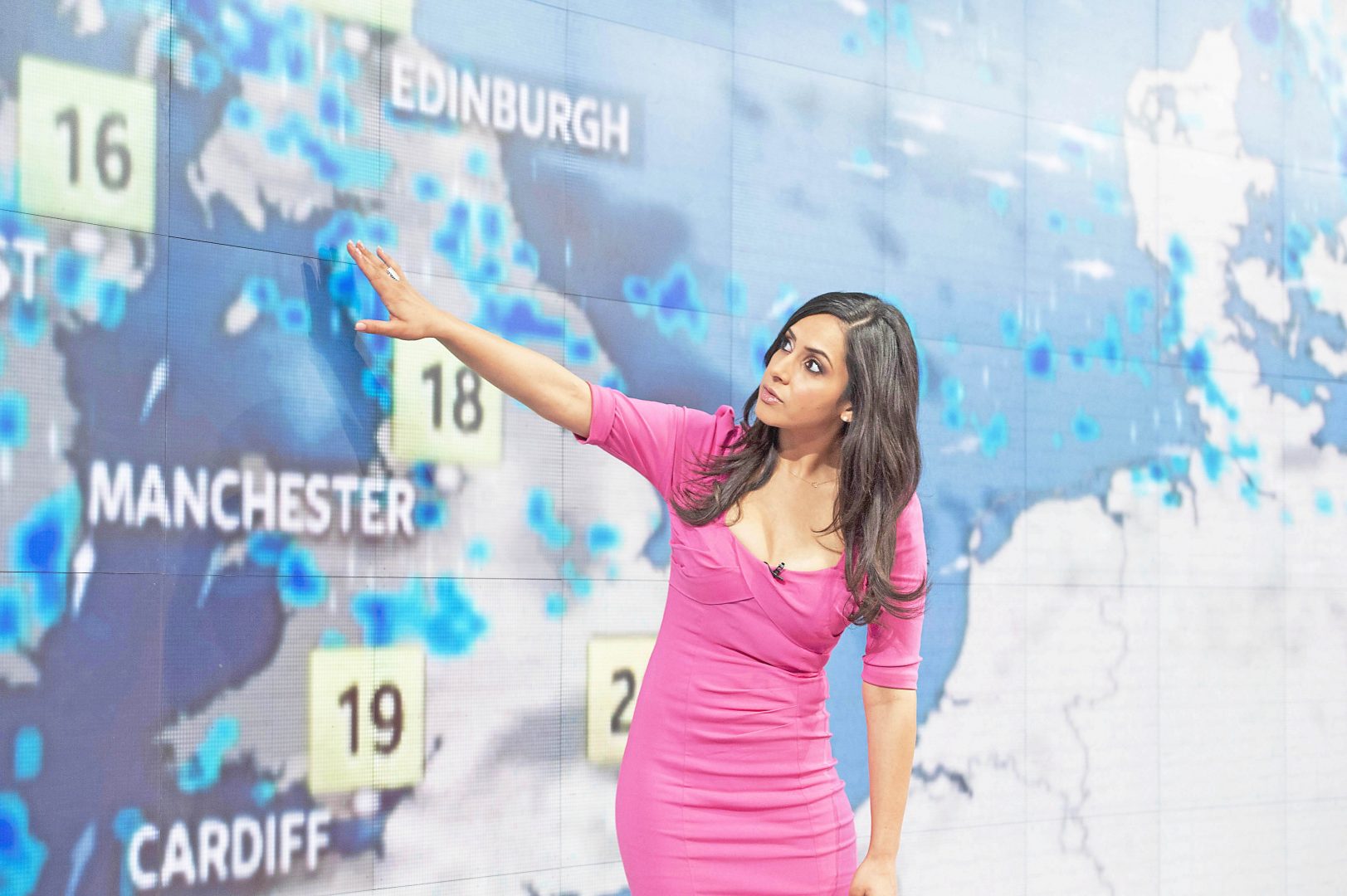Weather forecasts have always been an important part of the news. They help us prepare for our day, avoid dangerous conditions, and understand what’s happening in the world around us. But lately, some viewers have noticed a trend that’s not about temperature or rainfall—it’s about what some female weather presenters are wearing.
In many countries, more and more female weather presenters are appearing on TV in clothing that some viewers feel is too revealing or too focused on fashion. This has led to debates: Is it just a modern way to dress? Or is it distracting from the important role these women play as science communicators?
Let’s break down this issue in a way that’s easy to understand.

What Do Weather Presenters Actually Do?
A weather presenter is not just someone reading numbers off a screen. Many of them are trained meteorologists or science communicators. Their job is to explain complex weather systems in a way that everyone can understand.
They help us plan our day:
- Should I bring an umbrella?
- Will it be safe to drive tonight?
- Is there a risk of flooding?
When storms, heatwaves, or hurricanes happen, these presenters become trusted voices. They help keep people safe by sharing accurate, calm, and timely information.
That’s why many people believe their appearance should match the seriousness of the job.
The Trend: More Focus on Looks Than Information?
In recent years, especially in countries like Mexico, the U.S., and parts of Europe, some TV channels have started showing female weather presenters wearing tight dresses, short skirts, or low-cut tops. While some viewers enjoy the fashion and personality these women bring to the screen, others think it’s a step too far.

For example:
- In Mexico, Yanet García became a viral sensation not just for her weather updates but for her outfits.
- In Romania and other European countries, viewers have complained to TV stations about the way female presenters dress on-air.
- In the U.S., local news stations have faced criticism when presenters’ clothes were seen as “too sexy” for the news.
In many of these cases, male presenters continue to wear standard shirts or suits—without much attention from viewers.
Is This Their Choice, or Pressure from TV?
Here’s where it gets complicated.
Some women choose to dress the way they do. They enjoy fashion, feel confident, and want to show their personality. That’s absolutely valid.
But in many situations, the pressure comes from producers, ratings, and audience expectations. TV is a visual medium, and some networks believe that “sexier” presenters will bring more viewers. These decisions are often made behind the scenes—by mostly male executives.
This can be unfair. It turns the focus away from a woman’s skills, training, and professionalism—and puts it only on how she looks.
The Double Standard
There’s clearly a double standard happening. Male weather presenters are rarely told to dress in a certain way to get attention. They aren’t judged on their appearance the same way women are. In fact, many people can’t even remember what their local male presenter wore yesterday—but they might remember the female presenter’s outfit.
This creates a problem: it suggests that women must look a certain way to be successful on TV, even when doing serious work like forecasting weather or issuing storm warnings.

Why This Matters
At first, this might seem like a small issue. “So what if someone wears a short dress?” you might think. But it’s actually part of a bigger problem.
- It can reduce credibility: If a weather presenter looks more like a fashion model than a scientist, some people may not take the forecast seriously. This becomes dangerous during emergencies.
- It sends the wrong message to young girls: Girls watching the news may get the idea that being attractive matters more than being smart or informed.
- It creates more pressure on women: Female professionals already face pressure to look perfect. Adding expectations about dressing a certain way makes their job even harder.
Some Weather Presenters Are Speaking Out
Thankfully, many weather professionals are aware of this problem and are speaking up. Some are choosing to wear more professional outfits. Others are calling out unfair standards in the industry.
In the U.S., the American Meteorological Society (AMS) encourages professional standards and supports women in science. Female meteorologists are using social media to share their experiences and fight back against objectification.
Even in countries where “glamorous” weather forecasts are common, more women are using their platforms to educate the public—not just about weather, but about equality and respect.
The Role of Social Media
Social media has made the situation both better and worse.
On one hand, it helps presenters connect with their audiences, explain the science, and build trust. But on the other hand, it also opens the door to constant judgment about their looks, clothing, or body.
Some presenters have even faced online harassment or bullying just because of what they wore—whether it was “too much” or “too modest.”
This shows that the conversation isn’t just about fashion—it’s about respect, safety, and professionalism.
What Can Be Done?
If we want to move forward, here are a few simple ideas:
- TV stations should prioritize skills over style: Hire presenters based on their knowledge and communication—not just their looks.
- Let women choose how to dress—without pressure: Support their right to feel comfortable and confident.
- Educate the public: Help viewers understand that being smart, accurate, and clear is more important than being trendy.
- Speak out against double standards: Hold media companies accountable for creating fair environments for everyone.
Final Thoughts
Weather presenters are not entertainers—they’re educators and protectors. Their job is to help us make good decisions in our daily lives and during dangerous events. While personality and style can add charm to a broadcast, the main focus should always be on the science, the message, and the public’s safety.
The way a female presenter dresses should never be more important than the work she does. It’s time to respect her for her brain, not just her outfit.



